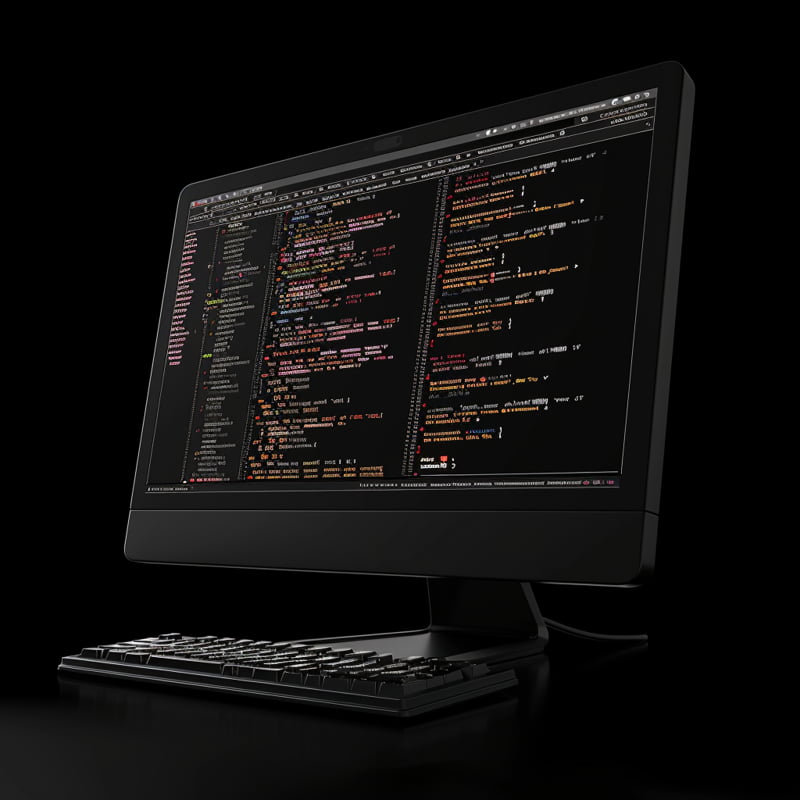Java Spring Interview Questions | Java Spring Boot Interview Questions
Java Spring Interview Questions and Answers blog aims to assist with interview preparation for interviews focusing on the Java Spring Framework.
Here, you will find an archive of commonly asked interview questions and their corresponding answers, as well as tips and best practices for using Spring in projects.
Java Spring is a highly versatile framework for developing enterprise grade apps, so in-depth knowledge of its concepts and features is vital for succeeding in interviews.
Whether you are an experienced developer or just beginning out, these interview questions on the Java Spring blog can offer invaluable advice and knowledge to help you achieve!
This Java Spring Framework interview questions blog will explore various topics related to the Java Spring Framework, from basics such as Spring Boot and MVC to advanced topics like security testing and microservices.
Each Java Spring questions post will offer clear explanations, code examples, and practice questions so you can master these concepts quickly.

1. What are AWTs and Swings in the context of Java development?
AWTs and Swings are different user interface toolkits in Java. AWTs are heavy-weight components that require OS libraries, while Swings are lightweight components that use simple JDC libraries.
2. What is the difference between Spring and EJBs regarding weight and dependency?
Spring applications are light and loosely coupled, unlike EJBs, which are heavy-weight and require an application server.
3. What are the differences between AWTs and Swings regarding weight and library usage?
AWTs are heavy-weight components that need OS libraries, while Swings are lightweight components that use simple JDC libraries.
4. Why are Spring applications more suitable for small-scale e-commerce applications?
Spring applications are light and loosely coupled, making them ideal for small-scale e-commerce applications with low investment costs.
In contrast, EJBs are heavy-weight and require an application server, making them less suitable for small-scale applications.
5. What is the compatibility difference between lightweight and heavy-weight applications when binding with networks or other layers?
Light applications can attach to any network as they have no specific dependencies, while heavyweight applications require a dependency on different layers.
6. Can Indian mobile numbers be compatible with any network? Why or why not?
Yes, Indian mobile numbers can be compatible with any network, but they may not be compatible with specific applications or systems like CDMS.
7. What tools can be used to build DO, data access, and hybrid courses?
Tools like DDBC, JP, IBAT, and VRM can be used to create DO, data access, and hybrid courses.
8. Why is compatibility with DOs necessary for business applications?
Compatibility with DOs is essential for business applications because they need to communicate with various data sources and manipulate data using DO classes.
9. What is the importance of compatibility between a business class and JDBC?
Compatibility between a business class and JDBC is necessary because the business class may need to access and manipulate data using JDBC.
10. What was the original name of Java Spring Framework, and why was it changed?
The original name of the Java Spring Framework was Interface 21, but it was later changed to Spring.
The name was changed to differentiate it from Enterprise Java Beans (EJBs) and to make enterprise Java applications lighter and loosely coupled.
11. What are AWTs and Swings, and how are they different regarding OS libraries and dependencies?
AWTs and Swings are Java GUI toolkits. AWTs are more dependent on OS libraries and dependencies, while Swings are more independent and have fewer dependencies.
12. What are Swings and EJBs, and how are they different regarding lightweight and loose coupling?
Swings are a Java GUI toolkit, while EJBs (Enterprise Java Beans) are a Java framework for building enterprise applications.
Swings are lightweight and loosely coupled, while EJBs are heavier and more tightly coupled.
13. How can a business class provide compatibility with DOs to operate with I1 IDOs, JPA DOs, or IBAT?
A business class can provide compatibility with DOs by implementing the necessary interfaces and methods to communicate and manipulate data using DO classes.
This is typically achieved by loosely coupling the business class with the data access layer, which handles the communication with DOs.
14. What does the name Spring represent in the context of the framework?
Spring was chosen to reflect the season and be compared with EJBs compared to winter.
It was also selected because Spring is lighter and easier to use than EJBs.
15. What can be done to create a loosely coupled class in Java?
One can create an instance of another class (B) in the first class (A), but to ensure loose coupling, the business class should be designed to be compatible with any network or design, and the DAO classes should follow specific rules and interfaces.
By passing an implementation class object into the business layer, the business layer can become compatible with any DAO layer using Java runtime polymorphism into interface references.
16. Why is it essential to ensure loose coupling between two layers in Java?
Loose coupling allows for greater flexibility and easier maintenance of the application.
It also makes it easier to test each layer independently and to make changes to one layer without affecting the other.
17. How can the business layer become loosely coupled with the DAO layer in Java?
The business layer can become loosely coupled with the DAO layer by following specific rules and interfaces provided by tools such as JPA or IBAT.
Bypassing an implementation class object into the business layer, the business layer can be compatible with any DAO layer using Java runtime polymorphism into interface references.
18. What is the role of the controller class in ensuring loose coupling between layers in Java?
The controller class is an intermediary between the user interface and the business logic.
Suppose the business logic and the underlying data access layer (DAO) are compatible and loosely coupled.
In that case, the controller class can communicate with both layers without knowing the implementation details.
19. What examples of libraries can be used to implement a business part in Java?
Examples of libraries that can be used to implement a business part in Java include web logic, JBoss, and Spring.
These libraries provide different features and functionalities for implementing business logic, such as transactions and security.
Following these libraries’ rules and interfaces, the business layer can remain loosely coupled with the underlying DAO layer.
20. Why is it impossible to change a tightly coupled business part to JBoss or Spring if it is integrated with weblogic?
Changing it to JBoss or Spring becomes problematic if the business part is tightly coupled with the web logic because they are closely interconnected. Any modification in one part will affect the other, making the system heavy and hard to maintain.
21. How does Java runtime help in achieving loose coupling?
Java runtime allows flexibility in implementing loosely coupled systems by decoupling the controller and business parts.
This is achieved using interfaces, which act as contracts between the controller and the business part, allowing them to communicate without being tightly bound.
22. What are the advantages of using lightweight frameworks like Spring instead of heavy-weight application servers?
Lightweight frameworks like Spring can be executed more easily without an application server and offer more flexibility than heavy-weight application servers.
They also have a smaller footprint and require fewer system resources, making them ideal for quickly developing and deploying applications.
23. How can classes A and B be lightweight and loosely coupled?
Classes A and B can be lightweight and loosely coupled by creating parent class references and passing child class objects.
This allows the classes to communicate through the parent class interface, reducing their dependency on each other and increasing flexibility.
24. What is the role of XML files in implementing loose coupling?
XML files can implement loose coupling by allowing for future changes and object creation without modifying the code.
This is because XML files define the application’s configuration, allowing for the creation and configuration of objects at runtime without hard-coded dependencies.
25. What Spring methods help create layers like weight and loosely coupled?
The interface model and type click coupling are the main methods from Spring that help in creating layers like weight and loosely coupled.
The interface model allows for implementing loosely coupled systems by defining contracts between components.
In contrast, type click coupling allows for the automatic wiring of dependencies based on their types, reducing the amount of manual configuration required.
26. What classes should be extended or implemented to create a missed application with solids?
For solids, classes must be extended from the solid interface, generic select class, or A2DP select class.

Java Spring Training

27. What should be done for EJB classes?
EJB classes must be implemented from APIs, such as remote classes provided in some EJB interfaces and EJB home.

28. What can be used for business and DAO parts in Spring?
Simple puzzle classes can be used for business and DAO parts in Spring.
29. What should be done for solid interfaces?
Classes must be extended from the satellite interface or the satellite classes for solid interfaces.
30. What is the recommendation for using classes in Spring?
The recommendation is to use association instead of inheritance to make a class lightweight in Spring.
This model allows class references and objects to be associated with each other, obtaining D class behaviours.
This approach is beneficial when implementing satellite classes, where the satellite interface must be maintained along with the libraries.
31. What is the difference between association and inheritance regarding class coupling?
In association, classes are not tightly coupled with each other, whereas in inheritance, a class must have dependency on other classes.
32. Why are association rules used to make applications lightweight?
Association rules make applications lightweight because they allow obtaining other classes without extending or implementing the original class.
33. What is a POJO class in the context of association?
A POJO (Plain Old Java Object) class is a class that does not extend from any other class and can be associated with other classes.
34. Why does Spring recommend using POJO models instead of inheritance models?
Spring recommends using POJO models instead of inheritance models because they make the application more lightweight and easier to maintain.
35. How can implementation objects be passed as associated objects in Java?
Implementation objects can be passed in Java as associated objects using reflection classes.
They can be created at runtime by taking arguments through the command prompt and using the class dot new instance method.
36. What is an example of creating an instance of a class using the class dot new instance method?
For example, if a primary method is called with a name argument of “A”, an instance of the A class can be created using the class dot new instance method.
37. What principles should developers follow in a complete Spring implementation?
Developers must follow runtime polymorphism, association, and hazard relationships to ensure the class’s proper implementation in a complete Spring implementation.
38. What is the use to manage puzzle classes and pass runtime arguments in JavaScript?
It uses XML files instead of command prompts to manage puzzle classes and pass runtime arguments in JavaScript.
39. How does the JavaScript engine supply input to the puzzle class?
The JavaScript engine can read XML documents and pass inputs to the required puzzle classes.
40. What is the role of container support in supplying input to the puzzle class?
Container support is needed to supply input to the puzzle class in JavaScript.
41. What three containers are used in JavaScript to handle data from XML documents and pass it to puzzleclasses?
The three containers used in JavaScript to handle data from XML documents and pass it to puzzle classes are core, j2w, and web.
42. Where is the web container available in the context of JavaScript?
The web container is not in JavaScript but is available in Spring MBC.
43. What role does the web container play when using JavaScript?
The web container is prepared on top of JavaScript, allowing for managing VCC classes.
44. What does the Tomcat container do when deploying an application?
The Tomcat container reads the web.xml file and finds the load-on-startup solids.
If any load is found, it creates an object using the configurations in the web.xml file and calls the lifecycle method to initialise the solid’s lifecycles.
45. What are some of the features provided by the select container?
The select container provides features such as creating solid objects, managing the lifecycle, and calling the destroy method.
It also creates particular context and configuration objects from the web.xml file, reads parameters and context parameters, and performs other tasks.
46. What role does the JavaScript framework play in passing required objects into puzzle classes and managing runtime arguments?
The JavaScript framework enables passing required objects into puzzle classes and manages runtime arguments through various containers.
47. What are the main features of the Tomcat container?
The Tomcat container reads web dot XML files, creates instances of Java and bean classes, manages bean life cycles, and passes dynamic parameters to the selected class. It also provides unit and context parameters.
48. What can the Tomcat container do with web dot XML files?
The Tomcat container can read and dynamically create Java and Bean class instances using web dot XML files.
49. What are the four main features of the Tomcat container?
The Tomcat container reads web dot XML files, creates instances of Java classes, manages bean life cycles, and passes dynamic parameters to the selected class.
50. What can Cybose containers do about puzzle classes and XML files?
Cybose containers can read XML files, create objects of puzzle classes, and manage the life cycles of puzzle classes.
They can also configure life cycle methods and pass dynamic inputs from the XML file.
51. What is the role of IoC containers in creating instances of puzzle classes and managing their life cycles?
IoC containers can read XML file data and create instances of simple puzzle classes.
They can also manage life cycles and pass dynamic arguments and parameters to the puzzle classes, a process known as dependence injection.
52. What is the role of the Tomcat container in managing the lifecycle of Java classes?
The Tomcat container is a powerful tool that can dynamically read and load web.xml files, create objects of Java classes, and pass dynamic parameters to select courses.

Java Spring Online Training

53. What is the Java Spring Framework, and what are its key features?
The Java Spring Framework is a Java framework designed to simplify enterprise Java development.
It focuses on best practices and design patterns, enabling better Java code writing.
54. What is the email application?
The email application is a Java class with a primary method, an object of the email client class, and two send email methods.
55. What does the send email method in the email application do?
The send email method in the email application performs spell-checking using an introductory spell checker class instantiated inside the constructor.
56. What is the role of the Tomcat container in managing Java classes?
The Tomcat container is a powerful tool that can dynamically read and load web.xml files, create objects of Java classes, and pass dynamic parameters to select courses.
This makes it easier to manage the lifecycle of Java classes.
57. What is the Java Spring Framework, and what is it used for?
The Java Spring Framework is a Java framework designed to simplify enterprise Java development. It focuses on best practices and design patterns, enabling better Java code writing.
58. What does the send email method do in the email application?
The send email method performs spell-checking using an introductory spell-checker class instantiated inside the constructor.
59. What is the problem with the email client class in the given code?
The email client class is highly dependent on the introductory spell checker class, making it difficult to write better Java code and connect the two classes tightly.
60. What is the Java Spring Framework, and what was its initial focus?
The Java Spring Framework is a popular open-source framework for developing Java applications.
It initially started as a dependency injection framework, creating and managing objects, or Spring Beans, and injecting their dependencies at runtime.
61. What role does Java play in developing applications?
Java is a programming language that helps developers solve problems and is used to embed predefined APIs into their programs.
These libraries are essential for developers to accomplish projects on time and avoid writing much code.
62. Why are Java frameworks essential, and what makes them efficient?
Java frameworks are essential because they help developers to build applications faster and more efficiently.
They provide pre-built components and functionalities, reducing the amount of code that needs to be written from scratch.
Java frameworks are designed to be fast and efficient, making it easier for developers to achieve targets and deadlines.
63. What examples of Java libraries can be used for specific tasks?
For example, to search in PDF or generate an Excel report, developers can use pre-defined libraries like IText or iText7 for text manipulation in PDF and Apache POI for working with Excel files.
64. How important is it to consider project requirements and constraints when programming frameworks or pre-defined code snippets?
When using frameworks or pre-defined code snippets, it is crucial to consider project requirements and constraints to ensure that the right tools are chosen for the job.
This can help developers easily accomplish tasks, meet deadlines, and increase application speed and efficiency.
65. What is the key benefit of using frameworks or APIs in programming?
The key benefit of using frameworks or APIs is increased application speed and efficiency, as they are well-optimized.
They can also help developers meet project deadlines by providing pre-written code that can be easily integrated into projects.
66. What is the Java framework principle, and how does it help solve problems in Java object development?
The Java framework principle is a design approach that abides by the Hollywood principle, which states that objects are created by the frameworks themselves, not by the developer.
This approach helps solve problems such as dependency injection and dependency injection in Java objects by managing the creation and management of objects within the framework.
67. What are some widely used Java frameworks in the industry?
Some widely used Java frameworks in the industry include Hibernate, Struts, and Spring. Spring is a complete and modular framework for developing enterprise applications in Java, specifically for enterprises like Amazon and Google.
It can be used for all layer implementations for the entire application, including setting specific layers.
68. What is Spring MBC, and how is it used in Java application development?
Spring MBC is a design pattern that allows the construction of all Java application layers.
It separates the application into three interconnected parts: the model, which represents the data; the view, which is the user interface; and the controller, which handles user input and communicates with the model and view.
Spring supports the Spring MVC design pattern, making developing and maintaining complex Java applications easier.
69. What features of the Java Spring Framework make it popular among developers?
The Java Spring Framework is known for its flexibility and adaptability. It allows developers to create and modify code for different layers.
It is also open-source, meaning developers can access the code anytime and manipulate it to their needs.
Additionally, the Java Spring Framework is lightweight in memory and follows design patterns, making it suitable for various applications.
70. How does the Java Spring Framework allow developers to write an enterprise-level hospital management system?
Developers can write enterprise-level hospital management system layer codes using the Java Spring Framework.
The framework’s open-source nature and flexibility enable developers to modify and manipulate the code to meet the specific requirements of the hospital management system.
71. What are some benefits of using frameworks and APIs in programming structures?
Using frameworks and APIs in programming structures can increase application speed and efficiency, improve performance, and help developers meet project deadlines.
They provide pre-built solutions for everyday problems, reducing the time and effort required to develop custom code.
72. What makes the Java Spring Framework a versatile tool for developers?
The Java Spring Framework is versatile because it allows developers to manipulate the framework and APIs within their crucial domain.
It follows design patterns and is lightweight in memory, effectively solving problems encountered in enterprise edition Java.
The Java Spring Framework also allows for integrating or using multiple frameworks, providing even more functionality for developers.
73. What does it mean that the Java Spring Framework is a “framework of frameworks”?
The term “framework of frameworks” refers to the Java Spring Framework’s ability to integrate or use multiple frameworks within the framework itself.
This allows developers to take advantage of the functionality and features of various frameworks without having to manage them separately, making development more efficient and streamlined.
74. What is the first level of simplicity in the Java Spring Framework?
The first level of simplicity in the Java Spring Framework involves writing code in the form of Plain Old Java Objects (POJOs) or models, which define business objects as classes.
75. What is the Spring Expression Language, and what are its uses?
The Spring Expression Language is a powerful feature of the Java Spring Framework that allows for writing programs and expressions concisely and expressively.
It is used for data binding, data access, and other tasks.
76. What examples of cross-cutting concerns can be implemented using AOP?
Cross-cutting concerns that can be implemented using AOP include security, logging, and caching. For example, in an e-commerce application, AOP can record user browsing history for promotional offers or advertisements or log user activity for security purposes.
77. How does AOP ensure proper implementation of cross-cutting concerns?
AOP ensures the proper implementation of cross-cutting concerns by allowing them to be implemented in every module and stage of the application, such as the model, view, and controller.
This helps ensure that the concerns are addressed consistently and effectively throughout the application process.
78. What is the user’s role in the MVC design pattern in enterprise applications?
The user sends a request over the presentation layer to the controller for processing.
The controller then returns the data to the view, which is sent back to the user as a response.

79. Is the XML file part of the source code?
No, the XML file is not part of the source code but is processed by the JVM, which processes Java files as byte code.
80. What are layout files in the context of Java Spring Framework?
Layout files contain various properties, such as the bean’s name, property, and value. They are created in XML files and used in Java Spring Framework for reference.

At its core, Java Spring Boot Microservices interview questions span an expansive spectrum, from fundamental aspects of the Spring Framework through advanced topics like Spring Security, Data, and Boot.
Preparing for these Java Spring MVC interview questions requires in-depth knowledge of its components and direct experience building Spring applications.
Preparing for Spring interviews as a fresher or experience requires reviewing its documentation and PDFs, practising code using Spring, staying informed on its latest releases and features and staying abreast of developments in Java Spring.
Candidates attending interviews and microservices Java spring boot interview questions must be prepared to explain their thought processes, design decisions, and code solutions in detail. Furthermore, effective communication must also be an advantage, as interviewers may ask follow-up questions or require candidates to address more complex scenarios.
Java Spring interviews may present their candidates with unique challenges; however, with proper preparation and knowledge of the Spring Framework they should feel prepared and secure in showcasing their abilities to potential employers.

Java Spring Course Price


Sindhuja
Author